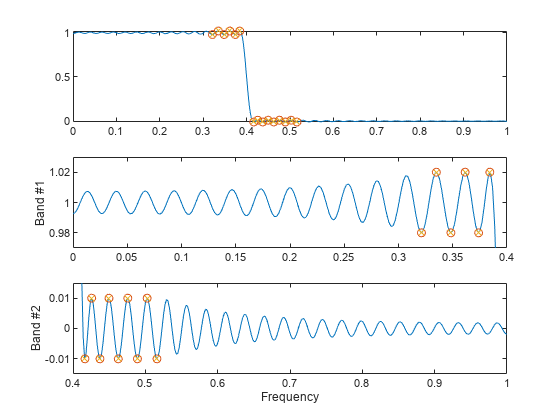fircls
Constrained-least-squares FIR multiband filter design
Description
b = fircls(n,f,amp,up,lo)n + 1 linear phase FIR filter. The
frequency-magnitude characteristics of this filter match those given by vectors
f and amp. up and
lo are vectors with the same length as amp. They
define the upper and lower bounds for the frequency response in each band.
Examples
Input Arguments
Output Arguments
Algorithms
The fircls function uses an iterative least-squares algorithm to obtain
an equiripple response. The algorithm is a multiple exchange algorithm that uses Lagrange
multipliers and Kuhn-Tucker conditions on each iteration.
References
[1] Selesnick, I. W., M. Lang, and C. S. Burrus. “Constrained Least Square Design of FIR Filters without Specified Transition Bands.” Proceedings of the 1995 International Conference on Acoustics, Speech, and Signal Processing. Vol. 2, 1995, pp. 1260–1263.
[2] Selesnick, I. W., M. Lang, and C. S. Burrus. “Constrained Least Square Design of FIR Filters without Specified Transition Bands.” IEEE® Transactions on Signal Processing. Vol. 44, Number 8, 1996, pp. 1879–1892.
Extended Capabilities
Version History
Introduced before R2006a
